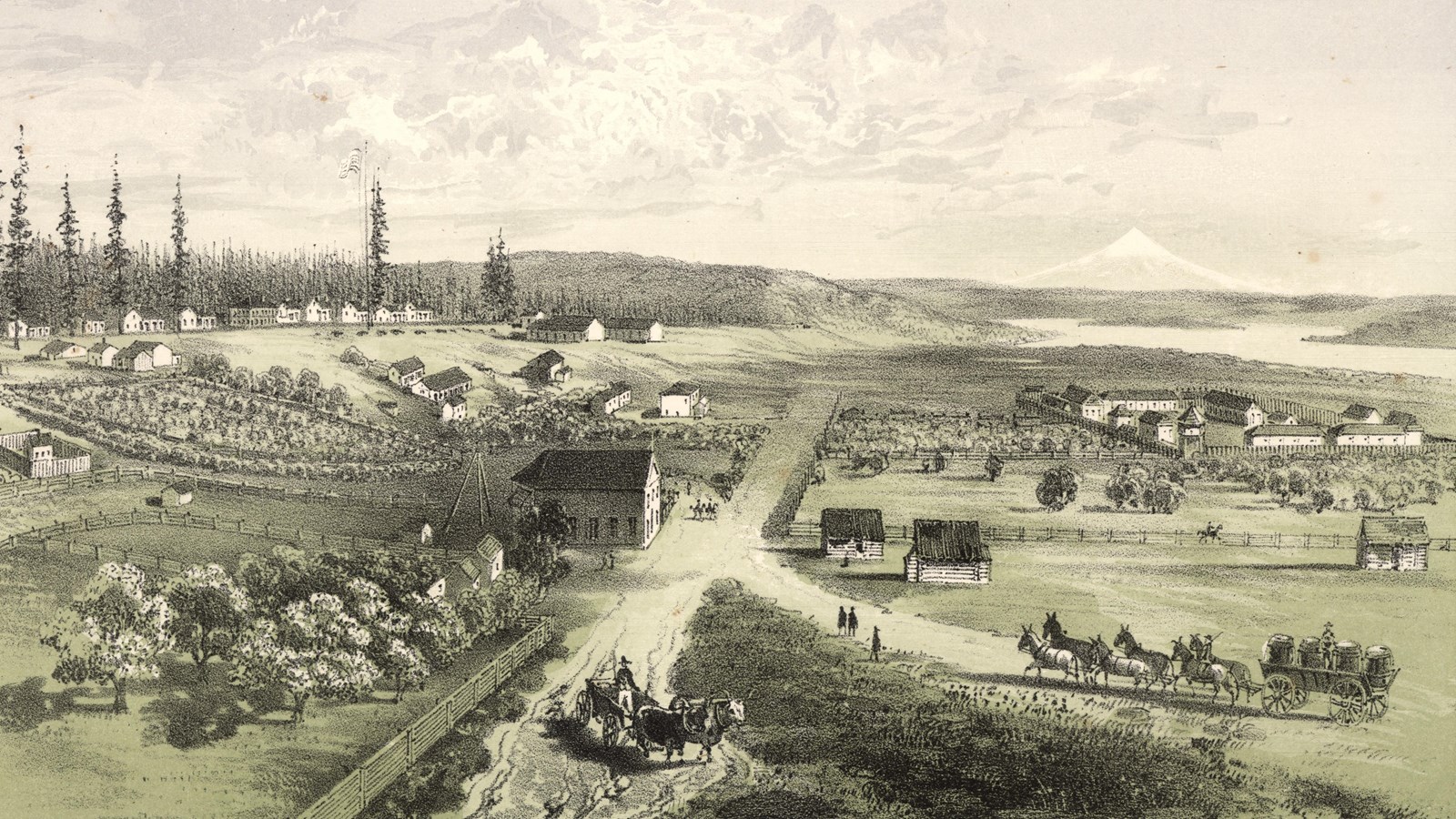Last updated: June 11, 2024
Place
Parade Ground Tour Stop 2: The Army Arrives

NPS Photo
Quick Facts
Amenities
1 listed
Wheelchair Accessible
From this vantage point, you are facing a reconstruction of Fort Vancouver, the fur trading fort established in 1825 by the British Hudson’s Bay Company (HBC). Headed by Chief Factor John McLoughlin, Fort Vancouver was the headquarters for all operations in what was known as the Columbia Department, a vast territory that stretched from present day Alaska to California and east into what is now Idaho. The trade was driven by beaver pelts, a highly prized material for luxury goods like gentlemen’s hats.
The HBC was of course not the first group to trade along the Columbia River. Indigenous Tribes have occupied this land since time immemorial and cultivated its resources to create one of the wealthiest and most densely populated areas in Native North America. By the time the HBC arrived in the winter of 1824, this area along the Columbia River was a hub in a vast regional trade network that used both the Columbia River and overland trails to transport goods. Controlled burns created prairies like the one eventually settled by the HBC that were ideal for both trade and agriculture. Indigenous knowledge, wealth, and cooperation were integral to the success of the fur trade.
During the 1830s and 40s, Fort Vancouver grew into one of the largest settlements in the Northwest. Sailing up the Columbia River on May 13, 1849, the soldiers of the Army’s 1st Artillery Regiment would have seen not only the wooden stockade—the administrative hub of the fort—but fields and orchards producing crops such as potatoes, grain, and apples, and sawmills cutting lumber for export. Although the fort’s administrators lived in apartments within the stockade, the majority of workers who kept this operation running lived with their families just west of the fort in the employee Village. As a global company, the HBC recruited employees from all over the world. Those first soldiers established camp on the slope above the Village would have encountered a diverse community.
After their arrival in 1849, the Army relied on HBC infrastructure and cooperation to establish an outpost. In the early days of Camp Columbia, the Army rented several HBC buildings both inside and outside the stockade to serve as living quarters, offices, and warehouses.
Think of a time when you have joined a new community (a move, a new school or job, etc.). What was that experience like, and how did you adjust to your new environment?
The HBC was of course not the first group to trade along the Columbia River. Indigenous Tribes have occupied this land since time immemorial and cultivated its resources to create one of the wealthiest and most densely populated areas in Native North America. By the time the HBC arrived in the winter of 1824, this area along the Columbia River was a hub in a vast regional trade network that used both the Columbia River and overland trails to transport goods. Controlled burns created prairies like the one eventually settled by the HBC that were ideal for both trade and agriculture. Indigenous knowledge, wealth, and cooperation were integral to the success of the fur trade.
During the 1830s and 40s, Fort Vancouver grew into one of the largest settlements in the Northwest. Sailing up the Columbia River on May 13, 1849, the soldiers of the Army’s 1st Artillery Regiment would have seen not only the wooden stockade—the administrative hub of the fort—but fields and orchards producing crops such as potatoes, grain, and apples, and sawmills cutting lumber for export. Although the fort’s administrators lived in apartments within the stockade, the majority of workers who kept this operation running lived with their families just west of the fort in the employee Village. As a global company, the HBC recruited employees from all over the world. Those first soldiers established camp on the slope above the Village would have encountered a diverse community.
After their arrival in 1849, the Army relied on HBC infrastructure and cooperation to establish an outpost. In the early days of Camp Columbia, the Army rented several HBC buildings both inside and outside the stockade to serve as living quarters, offices, and warehouses.
Think of a time when you have joined a new community (a move, a new school or job, etc.). What was that experience like, and how did you adjust to your new environment?
